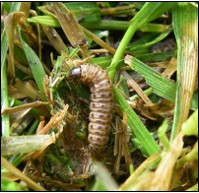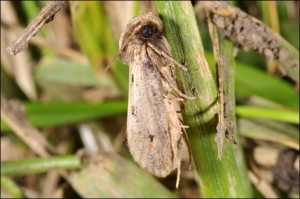Webworm in Corn
go.ncsu.edu/readext?898280
en Español / em Português
El inglés es el idioma de control de esta página. En la medida en que haya algún conflicto entre la traducción al inglés y la traducción, el inglés prevalece.
Al hacer clic en el enlace de traducción se activa un servicio de traducción gratuito para convertir la página al español. Al igual que con cualquier traducción por Internet, la conversión no es sensible al contexto y puede que no traduzca el texto en su significado original. NC State Extension no garantiza la exactitud del texto traducido. Por favor, tenga en cuenta que algunas aplicaciones y/o servicios pueden no funcionar como se espera cuando se traducen.
Português
Inglês é o idioma de controle desta página. Na medida que haja algum conflito entre o texto original em Inglês e a tradução, o Inglês prevalece.
Ao clicar no link de tradução, um serviço gratuito de tradução será ativado para converter a página para o Português. Como em qualquer tradução pela internet, a conversão não é sensivel ao contexto e pode não ocorrer a tradução para o significado orginal. O serviço de Extensão da Carolina do Norte (NC State Extension) não garante a exatidão do texto traduzido. Por favor, observe que algumas funções ou serviços podem não funcionar como esperado após a tradução.
English
English is the controlling language of this page. To the extent there is any conflict between the English text and the translation, English controls.
Clicking on the translation link activates a free translation service to convert the page to Spanish. As with any Internet translation, the conversion is not context-sensitive and may not translate the text to its original meaning. NC State Extension does not guarantee the accuracy of the translated text. Please note that some applications and/or services may not function as expected when translated.
Collapse ▲
Webworm Larva

Adult Webworm
Several species of webworms (Crambus spp.) may occasionally be found feeding on seedling corn plants. Webworms overwinter as caterpillars in the soil and around grassy plants. They eat a wide variety of grasses. Webworms typically construct a silken tunnel in the soil, leading to the host plant. The short (1/4 to 1/2 inch long), hairy, usually spotted, and active caterpillars are most often found in or near the silken tunnel. Damage ranges from foliage feeding where leaves will show holes and ragged edges, to small seedlings being cut off, resembling cutworm damage.
Webworms can be found in most corn fields at very low levels but seldom pose an economic threat. Populations can be much higher when corn is planted after spring plowing of pasture or especially when sod is herbicide killed and planted with no-tillage methods. If necessary, webworms can be controlled with insecticides. The normal scouting methods employed in seedling corn will detect economic infestations if properly done. Sometimes webworms are one of several seedling insect pests acting in concert to threaten a seedling stand. See scouting guidelines for seedling pests.


